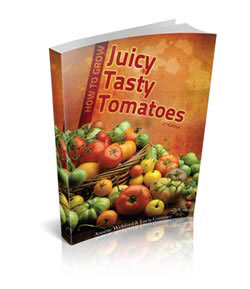Different Ways to Cook Spinach
Spinach is an incredibly easy vegetable to grow, particularly Swiss chard or silver beet. But what do you do when you are faced with kilo after kilo of fresh spinach?
Different types of Spinach
True spinach (Spinacia oleracea) is not grown as widely as high yielding Swiss chard (Beta vulgaris) which is, to many non-horticultural people all over the world, the only spinach there is. The most likely reason for this is that true spinach has a much shorter picking season, it doesn’t like too much heat, and it simply doesn’t produce the same sort of ongoing yields that Swiss chard and sugar beet produce.
The other type of spinach you will find is New Zealand spinach (Tetragonia expansa), which grows particularly well in the southern hemisphere, and makes an ideal substitute for other types of spinach.
The cooking methods and recipes discussed here are perfect for all types of spinach.
Ways to Eat Spinach
While raw baby spinach is a great addition to salads, and can be added to sandwiches instead of lettuce, Swiss chard is more commonly cooked, particularly once the leaves have grown and the stalk has widened through the leaf to form a distinctive white rib – or red in the case of ruby chard.
Probably the best known way to eat cooked spinach is the way it is prepared and frozen commercially all over the world – in the form of creamed spinach, often with the addition of Feta cheese.
But there are many more recipes, including quiches and tarts, and more complex and profoundly interesting recipes that combine spinach with eggs and/or cheese, and sometimes other vegetables as well. There are also a number of ways that you can cook chard ribs which are removed from the leaves before they are cooked, or in some instances after the whole leaf (stalk and all) has been blanched for a minute or two in boiling water.
So if you are producing a mountain of spinach from your garden patch (and that really isn’t difficult to do), before you get bored with boiled and creamed spinach, try cooking this healthy vegetable other ways.
Preparing Swiss Chard
Open just about any older recipe book and you will find a multitude of recipes that tell you to cook spinach in lots of boiling, salted water. The instructions will change from there, telling you to drain and press through a sieve; drain and refresh with cold water; drain and liquidise…
The thing is that cooking any vegetable in too much water results in much of the goodness being thrown down the sink; unless of course you use the water as a kind of insipid stock. It is much better to sweat the veg in a pot, using only the water that is left on the leaves after you have rinsed them. Do this at a relatively low temperature on top of the stove, until the spinach has wilted and is super-soft. Then you can revert to the original recipe. Usually there is hardly any moisture to drain, ensuring you are left with ALL the goodness. It also tastes better in the long run.
Recipes for Spinach
Books and books have been written about cooking vegetables, and most contain at least a handful that feature spinach. You will also find hundreds if not thousands of inspiring recipes on good cooking sites on the Internet.
Here is an original recipe born from the need to cook mountains of this year’s Swiss chard harvest (picture above).
Peel and halve one large white onion and two large red onions. Slice (not too fine) and cook in good quality virgin olive oil until transparent. While the onion is cooking, slice (about 10 mm thick) about a dozen young leeks (less if they are large) and add to the onion; stir. Now slice one red pepper, one yellow pepper and a green pepper (these add colour and distinctive flavour) and add to the onions.
While this is gently simmering away, trim the chard and remove the rib; don’t forget you can braise these (after removing the thin membrane that covers the outer part of the stalk) and serve with a sauce, or cook as a gratin.
Rinse a hefty handful of leaves and chop coarsely. Add progressively on top of the onions and leeks after stirring. Season with a little salt and freshly ground black pepper; allow to cook until everything is nice and soft but not slushy.
Lightly butter a suitable dish and spoon a layer of the veg mix to cover the bottom. Place a layer of small black mushrooms over this layer. Don’t use chunky mushrooms and don’t try and squeeze in too many (you’ll need about 150 g mushrooms in total). Add sliced (preferably garlicky) salami between the mushrooms (you could use lightly fried bacon instead, and will need only about 100 g). Top this with another layer of veg and add some more mushrooms and salami. Top with a final layer of veg.
Now whisk together a cup of cream and four eggs. Season with a pinch of salt and white pepper to taste. Grate about a cup-full of cheddar cheese (mature cheddar would be even better) and scatter over the top.
Bake for about half an hour in an oven preheated to 180 °C.
This dish is great on its own, but you could serve with a light tomato and lettuce salad and fresh brown bread or crispy rolls.
Tags: baby spinach, Feta cheese, New Zealand spinach, preparing Swiss chard, recipes for spinach, silver beet, spinach, Swiss chard, ways to eat spinach













